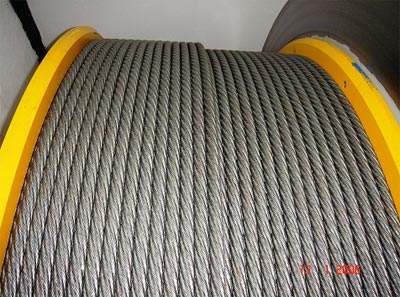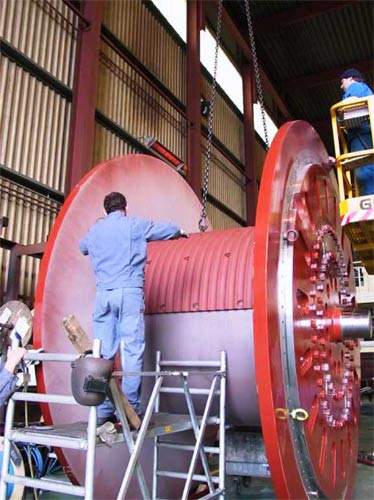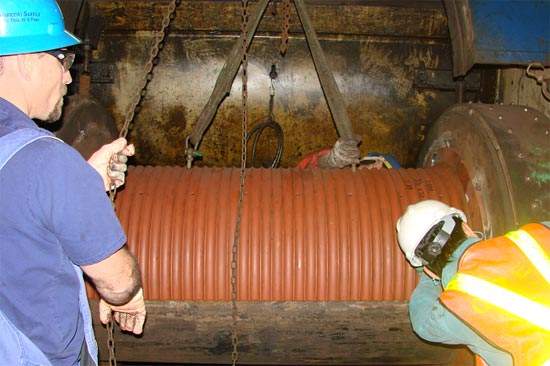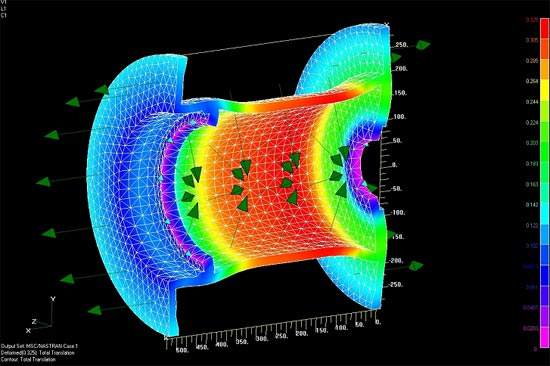The Lebus spooling system is designed for any hoisting and winching application that uses multiple layers of wire rope on a drum. The geometry of Lebus grooving, coupled with Lebus know-how, ensures that your wire rope spools smoothly onto and off the rope drum under total control – a dependable performance every time.
Every Lebus drum is custom engineered. It is designed and produced specifically to meet the application for which it is used. The groove pattern is engineered to suit the rope’s length, diameter and construction type.
ROPE SPOOLING SYSTEM FOR ANY HOISTING AND WINCHING APPLICATION
The Lebus system keeps the spooled rope in a uniformed pattern, evenly distributing the load between the individual layers of rope. This prevents lower layers being crushed or pinched by upper layers. Independent field tests have proved over the years that the Lebus system can extend rope life by more than 500%.
CONTINUOUSLY GROOVED DRUMS
With the Lebus system, the continuous groove in the drum is parallel to the flange except for two crossover points on each revolution where the groove moves across the drum half a pitch to give a full pitch of movement for each revolution. With Lebus grooving it is possible to calculate exactly the direction of the forces that the rope imposes on the drum because the spooling is totally controlled. This is not possible with any other spooling system.
SPLIT SLEEVES FOR WIRE ROPE
It is not always necessary to purchase a new drum. Lebus can supply its grooving system on outer sleeves that can be bolted or welded onto your old drum, no matter how old or worn it is.
Lebus split sleeves can also be an economic option for new drums. If in future a different type or size of wire rope is used, the sleeve can be taken off and replaced with a new sleeve engineered for the new application. The Lebus system is so flexible that it can be individually adapted to any existing or new hoist system, even in extreme operating conditions and high loadings. The Lebus system can be installed either during the manufacturing process or later onsite.
WINCH REFURBISHMENT CASE STUDY
Winches working in aggressive maritime environments can become worn out after a number of years’ service. Replacing them can be time-consuming and expensive, particularly when the lost revenue from the time out of service is considered. However, it is not always necessary to replace winches. Refurbishment is often a viable option.
Saipem Indonesia contacted Lebus wanting to replace six worn out anchor winches on its Semac 1 pipe laying barge. Lebus offered a refurbishment option instead of replacement, costing much less and taking just one week to complete. This solution saved Saipem hundreds of thousands of dollars in reduced downtime.
Instead of taking out the winches, Lebus welded on Lebus split sleeves, false flanges (to make the length of the drum match the new grooving) and compensation plates. Lebus also adjusted the level winders, which is a mechanical rope guide system and changed the gear ratio to match the number of pitches on the Lebus groove. This was done by just changing four sprockets.






